| Listing 1 - 10 of 33 | << page >> |
Sort by
|
Book
ISBN: 9780387938769 9780387938776 Year: 2009 Publisher: New York NY Springer New York
Abstract | Keywords | Export | Availability | Bookmark
 Loading...
Loading...Choose an application
- Reference Manager
- EndNote
- RefWorks (Direct export to RefWorks)
The SecretoryPathway The transport ofproteins and lipids from their site ofsynthesis at the endoplasmic reticu lum (ER) to the cellsurface ismediated by the secretory pathway and isan essential process in eukaryotic organisms. A great variety ofmolecules are extruded from cellsby the action ofthe secretory pathway, including extracellular matrix components that provide the foundation for constructing tissuesand organs. Moreover, this pathway playsa major role in the biogenesisof the plasma membraneand itsexpansion before celldivision. Therefore, withoutsecretion there would be no cells,tissuesor organs, and so it issafeto saythat we oweourvery existence to the secretory pathway. To understand the process ofsecretion we must learn about the organelles that compose the secretory pathway; the ER and Golgi apparatus, and the transport vesicles these or ganelles produce. The membrane ofthese organelles is primarily synthesized and assembled at the ER but with contributions from mitochondria (phosphatidylethanolamine) and the Golgi apparatus (sphingolipids). Newly synthesized proteins destined for secretion gain en try into the secretory pathway by translocation across the ER membrane. This translocation apparatus also integrates proteins into the membrane and establishes their topology with respect to the lipid bilayer (seeChapter 7). Many secretory proteins are covalently modified with oligosaccharides to produce glycoproteins, a biosynthetic process initiated in the ER and continued in the Golgi apparatus. Once proteins are properly folded and modified in the ER, they are allowed to leave and are ushered into COPlI-coated carrier vesiclesforming at specific exit sites (see Chapters 1 and 8).

ISBN: 9780387397177 0387397140 9780387397146 1441922911 9786612006159 1282006150 0387397175 Year: 2007 Publisher: New York, NY : Springer New York : Imprint: Springer,
Abstract | Keywords | Export | Availability | Bookmark
 Loading...
Loading...Choose an application
- Reference Manager
- EndNote
- RefWorks (Direct export to RefWorks)
This comprehensive volume, written by experts in the field, provides a current understanding of the molecular properties of the heat shock proteins and their roles in health and disease. Cell Stress Proteins includes advances in several aspects of stress protein research, with chapters ranging from basic studies of the role of heat shock proteins in protein folding to reviews examining the breakdown of stress protein regulation during disease. It also provides analysis of the biochemical and molecular properties of heat shock proteins which can be utilized in evaluating their role in human physiology and pathology. Cell Stress Proteins is an ideal book for researchers, clinicians, physicians, and graduate students in the fields of biochemistry, cell biology, microbiology, immunology, and genetics.
Life Sciences. --- Microbiology. --- Immunology. --- Biochemistry, general. --- Life sciences. --- Biochemistry. --- Sciences de la vie --- Immunologie --- Biochimie --- Microbiologie --- Heat shock proteins. --- Heat shock proteins --- Molecular Chaperones --- Heat-Shock Proteins --- Proteins --- Amino Acids, Peptides, and Proteins --- Chemicals and Drugs --- Animal Biochemistry --- Microbiology & Immunology --- Biology --- Human Anatomy & Physiology --- Health & Biological Sciences --- Stress proteins --- Proteins. --- Protein Science. --- Microbial biology --- Microorganisms --- Proteids --- Biomolecules --- Polypeptides --- Proteomics --- Biological chemistry --- Chemical composition of organisms --- Organisms --- Physiological chemistry --- Chemistry --- Medical sciences --- Immunobiology --- Life sciences --- Serology --- Biosciences --- Sciences, Life --- Science --- Composition --- Proteins .
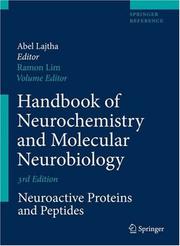
ISBN: 9780387303482 0387303480 9780387303819 0387303952 0387303812 Year: 2006 Publisher: New York, NY : Springer US : Imprint: Springer,
Abstract | Keywords | Export | Availability | Bookmark
 Loading...
Loading...Choose an application
- Reference Manager
- EndNote
- RefWorks (Direct export to RefWorks)
This volume is a collection of a variety of brain proteins and peptides whose structures and functions are relatively well known. Each chapter provides a succinct and up-to-date summary of a protein or peptide as well as a review of the individual's contributions to the field. The volume explores the progress that has been made in the field over the past few years and provides insight into the field today.
Neuropeptides --- Neurotransmitter Transport Proteins. --- Nerve Growth Factors. --- Neurotransmitter Agents --- Brain --- Brain Chemistry. --- Neuropeptides. --- Nerve tissue proteins. --- Protéines nerveuses --- metabolism. --- physiology. --- Electronic books. -- local. --- Nerve tissue proteins -- Handbooks, manuals, etc. --- Neuropeptides -- Handbooks, manuals, etc. --- Nerve tissue proteins --- Nerve Growth Factors --- Neurotransmitter Transport Proteins --- Brain Chemistry --- Nerve Tissue Proteins --- Intercellular Signaling Peptides and Proteins --- Membrane Transport Proteins --- Biochemical Phenomena --- Peptides --- Molecular Mechanisms of Pharmacological Action --- Metabolic Phenomena --- Central Nervous System --- Physiological Effects of Drugs --- Phenomena and Processes --- Chemical Phenomena --- Proteins --- Biological Factors --- Nervous System --- Carrier Proteins --- Pharmacologic Actions --- Amino Acids, Peptides, and Proteins --- Membrane Proteins --- Chemical Actions and Uses --- Chemicals and Drugs --- Anatomy --- Neurology --- Animal Biochemistry --- Medicine --- Human Anatomy & Physiology --- Health & Biological Sciences --- Nerve proteins --- Neural proteins --- Neuroproteins --- Brain peptides --- Medicine. --- Neurosciences. --- Biomedicine. --- Neurotransmitters --- Neural sciences --- Neurological sciences --- Neuroscience --- Medical sciences --- Nervous system
Book
ISBN: 9065905413 Year: 1992 Publisher: Weert M en P
Abstract | Keywords | Export | Availability | Bookmark
 Loading...
Loading...Choose an application
- Reference Manager
- EndNote
- RefWorks (Direct export to RefWorks)
635.1/.8 --- 641.12 --- Vegetables. Kitchen gardening --- Proteins. Nitrogenous foodstuffs. Meat, eggs, nuts, vegetables etc. --- 641.12 Proteins. Nitrogenous foodstuffs. Meat, eggs, nuts, vegetables etc. --- 635.1/.8 Vegetables. Kitchen gardening --- Proteins. Nitrogenous foodstuffs. Meat, eggs, nuts, vegetables etc
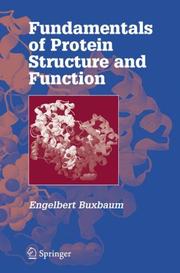
ISBN: 9780387263526 9780387684802 0387263527 0387684808 Year: 2007 Publisher: New York Springer
Abstract | Keywords | Export | Availability | Bookmark
 Loading...
Loading...Choose an application
- Reference Manager
- EndNote
- RefWorks (Direct export to RefWorks)
Fundamentals of Protein Structure and Function Engelbert Buxbaum, Dr. rer. nat. This book serves as an introduction to the fundamentals of protein structure and function. Starting with their make up from simple building blocks called amino acids, the 3-dimensional structure of proteins is explained. This is followed by an introduction into enzymology and modern concepts of enzyme kinetics, taking into account the physiological and medical significance of this often neglected topic. Also covered in the text are enzymes, biocatalysts, enzyme kinetics, hemoglobin, myoglobin, prion proteins, immunoproteins, motor proteins and movement, cell-cell interactions, molecular chaperones and chaperonins, transport of proteins into mitochondria, transport of proteins between cell compartments, transport of solutes across membranes, analytic techniques, protein-ligand interactions, protein purification, and protein structure, size and shape, emphasizing the link between protein structure, physiological function and medical significance. This book is an introductory text for researchers in protein biochemistry, molecular biology, cell biology, chemistry, biophysics and biomedical research. The book also makes an ideal textbook for graduate and advanced undergraduate courses in protein structure and function, and a supplementary text for related courses. About the Author Dr. Buxbaum is a biochemist with interest in enzymology and protein science. Dr. Buxbaum has been working on the biochemistry of membrane transport proteins for almost 20 years and has taught courses in biochemistry and molecular medicine at several universities. "The analytical descriptions of structure, biophysics and function of proteins is an extremely important aspect of today's education in biochemistry." Martin Sagermann, Ph.D. University of California, Santa Barbara
Proteins --- Structure --- Protein Conformation --- 577.122 --- 577.122 Protein metabolism --- Protein metabolism --- Conformation, Protein --- Conformations, Protein --- Protein Conformations --- Protein Folding --- Proteids --- Biomolecules --- Polypeptides --- Proteomics --- physiology --- Proteins - Structure
Book
ISBN: 9781441910448 9781441910431 Year: 2010 Publisher: New York ; London : Springer,
Abstract | Keywords | Export | Availability | Bookmark
 Loading...
Loading...Choose an application
- Reference Manager
- EndNote
- RefWorks (Direct export to RefWorks)
Physics and the life sciences have established new connections within the past few decades, resulting in biological physics as an established subfield with strong groups working in many physics departments. These interactions between physics and biology form a two-way street with physics providing new tools and concepts for understanding life, while biological systems can yield new insights into the physics of complex systems. To address the challenges of this interdisciplinary area, The Physics of Proteins: An Introduction to Biological Physics and Molecular Biophysics is divided into three interconnected sections. In Parts I and II, early chapters introduce the terminology and describe the main biological systems that physicists will encounter. Similarities between biomolecules, glasses, and solids are stressed with an emphasis on the fundamental concepts of living systems. The central section (Parts III and IV) delves into the dynamics of complex systems. A main theme is the realization that biological systems, in particular proteins, do not exist in unique conformations but can assume a very large number of slightly different structures. This complexity is captured in the concept of a free energy landscape and leads to the conclusion that fluctuations are crucial for the functioning of biological systems. The final chapter of this section challenges the reader to apply these concepts to a problem that appears in the current literature. An extensive series of appendices (Part V) provide descriptions of the key physical tools and analytical methods that have proven powerful in the study of the physics of proteins. The appendices are designed to be consulted throughout the section on protein dynamics without breaking the deductive flow of the logic in the central section of the book.
Biophysics --- Molecular biology --- Proteins --- Biophysique --- Biologie moléculaire --- Protéines --- Structure --- Biologie moléculaire --- Protéines --- EPUB-LIV-FT LIVPHYSI SPRINGER-B
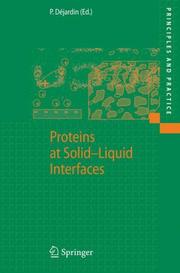
ISBN: 9783540326571 9783540326588 354032657X Year: 2006 Publisher: Berlin ; New York : Springer,
Abstract | Keywords | Export | Availability | Bookmark
 Loading...
Loading...Choose an application
- Reference Manager
- EndNote
- RefWorks (Direct export to RefWorks)
The adsorption of proteins at interfaces plays a role in many ?elds, such as health, food, environment and analysis. Fundamental aspects are useful when considering applications. We focus here especially on solid-liquid interfaces and present a few fundamental studies regarding adsorption - netics and conformational changes, and examples of applications to sensors and membranes. The ?rst part is dedicated to fundamental studies performed using - tical waveguide lightmode spectroscopy, as an example of a technique that has the advantage of not requiring labelled proteins, but is limited to s- ci?c supports. Conversely, the radiolabelling of proteins, which has the disadvantage of any labelling process, allows application to any kind of s- faces. As proteins bear both positive and negative charges, we can expect thein?uenceofanelectric?eldnormaltothe interfaceonthe pack- ing order at interfaces. The re?ning of data treatment may also lead to the determination of useful structural parameters. The balance between protein-surface and protein-protein interactions is a key point for the - scription of the structure at high coverage of the surface. Electrokinetic methods, like measurement of the streaming potential, may be helpful in the electrical characterisation of the interfacial layer facing the solution. The second part includes different bench techniques that were dev- oped to improve the sensitivity of the characterisation of the orientation and structure of the proteins at interfaces: dual polarisation interferometry and total internal re?ection ellipsometry are such recent examples.
Adsorption --- Proteins --- Solid-liquid interfaces --- Adsorption --- Protéines --- Interfaces solide-liquide --- EPUB-LIV-FT LIVCHIMI SPRINGER-B
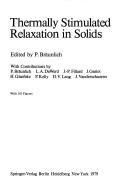
ISBN: 0387095950 3540095950 3540347976 9783540095958 9780387095950 Year: 2008 Volume: 37 Publisher: New York, NY : Springer New York : Imprint: Springer,
Abstract | Keywords | Export | Availability | Bookmark
 Loading...
Loading...Choose an application
- Reference Manager
- EndNote
- RefWorks (Direct export to RefWorks)
The coronins, first described in Dictyostelium discoideum in 1991, have been detected in all eukaryotes except plants. They belong to the superfamily of WD40-repeat proteins and represent a large family of proteins, which are often involved in cytoskeletal functions. Phylogenetic studies clearly distinguish 12 subfamilies of which six exclusively occur in vertebrates. In the present book we have made a sincere attempt to provide a comprehensive overview on all aspects of coronin proteins including history, structure, subcellular localization and function in different organisms. In addition, we
Microfilament proteins. --- Actin-binding proteins --- Cytoskeletal proteins --- Exoelectron emission. --- Solids --- Thermally stimulated currents. --- Thermal properties. --- Electronics and optics of solids --- 538.9 --- 538.9 Physics of condensed matter (in liquid state and solid state) --- Physics of condensed matter (in liquid state and solid state) --- Medicine. --- Biomedicine general. --- Clinical sciences --- Medical profession --- Human biology --- Life sciences --- Medical sciences --- Pathology --- Physicians --- Health Workforce --- Monograph --- Biomedicine, general. --- Medicine --- Biology --- Biomedical Research. --- Research. --- Biological research --- Biomedical research
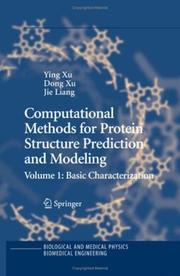
ISBN: 0387333193 9780387333199 1441922059 9786611066185 1281066184 0387683720 9780387683720 9781441922069 9780387688251 Year: 2007 Publisher: New York, NY : Springer New York : Imprint: Springer,
Abstract | Keywords | Export | Availability | Bookmark
 Loading...
Loading...Choose an application
- Reference Manager
- EndNote
- RefWorks (Direct export to RefWorks)
Volume one of this two volume sequence focuses on the basic characterization of known protein structures as well as structure prediction from protein sequence information. The 11 chapters provide an overview of the field, covering key topics in modeling, force fields, classification, computational methods, and struture prediction. Each chapter is a self contained review designed to cover (1) definition of the problem and an historical perspective, (2) mathematical or computational formulation of the problem, (3) computational methods and algorithms, (4) performance results, (5) existing software packages, and (6) strengths, pitfalls, challenges, and future research directions.
Computational biology --- Proteins --- 577.122 --- 577.122 Protein metabolism --- Protein metabolism --- Proteids --- Biomolecules --- Polypeptides --- Proteomics --- Protein conformation --- Biology --- Bioinformatics --- Conformation --- Structure --- Structure&delete& --- Mathematical models --- Physics. --- Proteomics. --- Proteins. --- Bioinformatics. --- Biophysics. --- Biological physics. --- Biophysics and Biological Physics. --- Protein Science. --- Computational biology. --- Structure. --- Conformation. --- Mathematical models. --- Biochemistry. --- Biological and Medical Physics, Biophysics. --- Biological chemistry --- Chemical composition of organisms --- Organisms --- Physiological chemistry --- Chemistry --- Medical sciences --- Bio-informatics --- Biological informatics --- Information science --- Systems biology --- Molecular biology --- Composition --- Data processing --- Proteins . --- Biological physics --- Physics
Book
ISBN: 9789048190331 9789048190324 Year: 2010 Publisher: Dordrecht Springer Netherlands Imprint Springer
Abstract | Keywords | Export | Availability | Bookmark
 Loading...
Loading...Choose an application
- Reference Manager
- EndNote
- RefWorks (Direct export to RefWorks)
Fabry disease is an X-linked inborn error of metabolism wherein deficiency of a lysosomal enzyme results in systemic deposition of glycosphingolipids. Storage deposition, and hence pathological disease, occurs preferentially in renal glomerular and tubular epithelial cells, myocardial cells, heart valve fibrocytes, neurons of dorsal root ganglia, and in endothelial smooth muscle cells of blood vessels. Thus, Fabry disease is a multi-system disorder, albeit with considerable phenotypic heterogeneity in onset and in severity; however, it is progressive, exhibits extensive morbidity, and is life-threatening. Within the past two decades, there has been a radical change in the natural course Fabry disease by virtue of the availability of specific enzyme replacement therapy. Moreover, there has been a concerted effort to better understand the underlying pathology and equally to identify patients prior to the onset of irreversible end-organ damage. It is to be hoped that the future for patients with Fabry disease can be viewed with greater, albeit guarded, optimism. This state-of-the-art textbook attempts to bridge the span of pre-clinical studies, clinical finding, and management options in a readable but comprehensive manner for the medical practitioner as well as the interested non-medical reader.
Medicine & Public Health. --- Metabolic Diseases. --- Human Genetics. --- Medicine. --- Human genetics. --- Metabolic diseases. --- Médecine --- Génétique humaine --- Lysosomal storage diseases. --- Proteins --- Fabry Disease. --- Lysosomes --- Metabolism --- Disorders. --- metabolism. --- Metabolism.
| Listing 1 - 10 of 33 | << page >> |
Sort by
|

 Search
Search Feedback
Feedback About
About Help
Help News
News